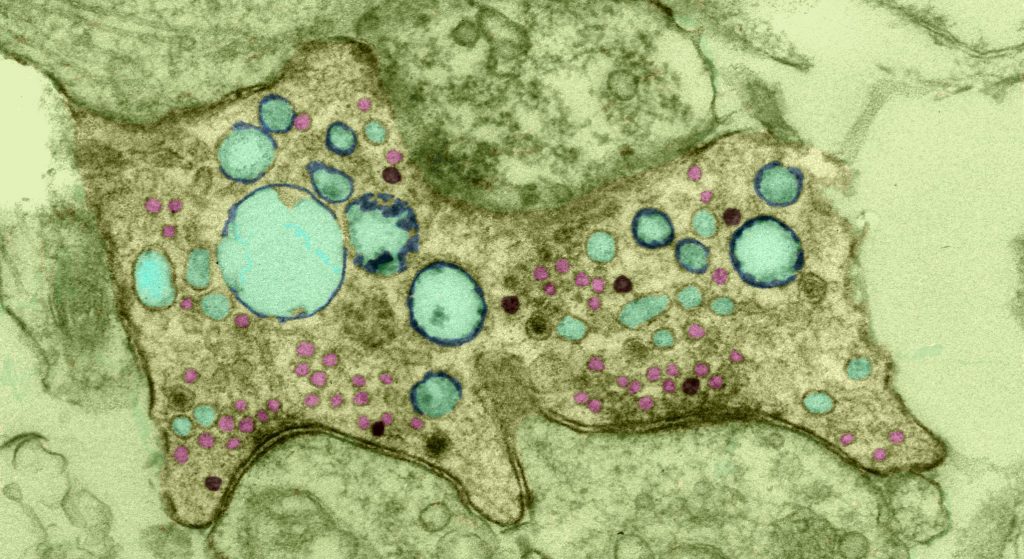In our website feature “Researcher in Spotlight” this month we ask our researcher Mike Cousin to tell us a bit more about himself.

Could you give us a quick overview of your background and career so far?
After graduating from the University of Edinburgh (Biochemistry), I completed a PhD (Biochemistry again) at the University of Dundee. After continuing my postdoctoral training at the Neurosciences Institute in Dundee, I won two fellowships (Royal Society / Human Frontiers of Science) to work in the laboratory of Prof. Phillip Robinson at the Children’s Medical Research Institute in Sydney, Australia. I arrived back at the University of Edinburgh in 2000 to a lectureship position and became Chair of Neuronal Cell Biology in 2010. I’m currently Co-Director of the Muir Maxwell Epilepsy Centre and a member of the Scientific Advisory committee of Epilepsy Research UK.
How did you become interested in your current field of research?
Believe it or not it was my undergraduate Honours project that kicked everything off. I was always interested in signalling mechanisms within cells and I chose a project looking at how calcium signals cause the release of hormones from the adrenal gland. Because of that I applied to do a PhD examining neurotransmitter release and have been in the field ever since, looking at multiple aspects of this essential process.
What are you currently working on and what importance does your work have for autism research?
Our major focus is to determine how neurotransmitter release from brain cells is controlled during periods of high activity, such as learning a task or generating memories. Efficient neurotransmitter release is essential for correct brain connections to be formed during the first years of life, and we are examining whether disordered neurotransmitter release contributes towards autism.
What do you enjoy most about scientific research?
No day is the same, there’s always something new to learn or problems to solve. I still get the buzz waiting for the results of important experiments, which I’m sure is the same for all researchers. It’s always exciting seeing which of your ideas hold up under testing and which do not (it’s not always the ones you think!).
What do you like about the scientific community in Edinburgh?
Edinburgh is almost unique in the collegiate nature of the community. I know that I can wander along a corridor and ask for advice on a huge range of different topics, something that has enhanced my lab’s research hugely over my time in Edinburgh.
What is your favourite high tech research tool?
We are pretty low tech in my lab! The most high tech piece of kit that we use is probably our brand new electrophysiology rig, however the fact that I’m impressed by it probably reveals that I’m still a novice at this technology (something my fellow PIs will definitely agree with!).
What is your favourite low tech research tool?
Although we don’t do this very often these days, hand developing Western blots is still a favourite! It’s basically the same as developing photos by hand, but with the added dimension of waiting for the result of an experiment to appear!
Where do you usually get the best ideas for your research?
A lot of the research we do now in my lab came from thinking about solutions to the questions we were tackling while I was walking into work. Usually the most useful ideas come during performing mundane tasks. However in case my wife reads this, I’m not volunteering for more household chores!
What is your hidden talent?
I guess most people know that I used to play a lot of rugby union and cricket, so I would probably say juggling. I was introduced to it while playing cricket and it became quite addictive for a while!

